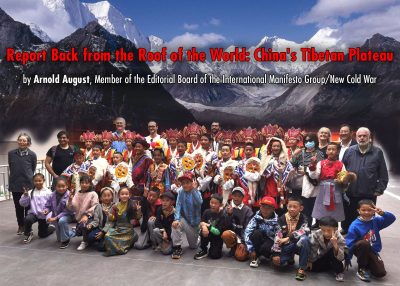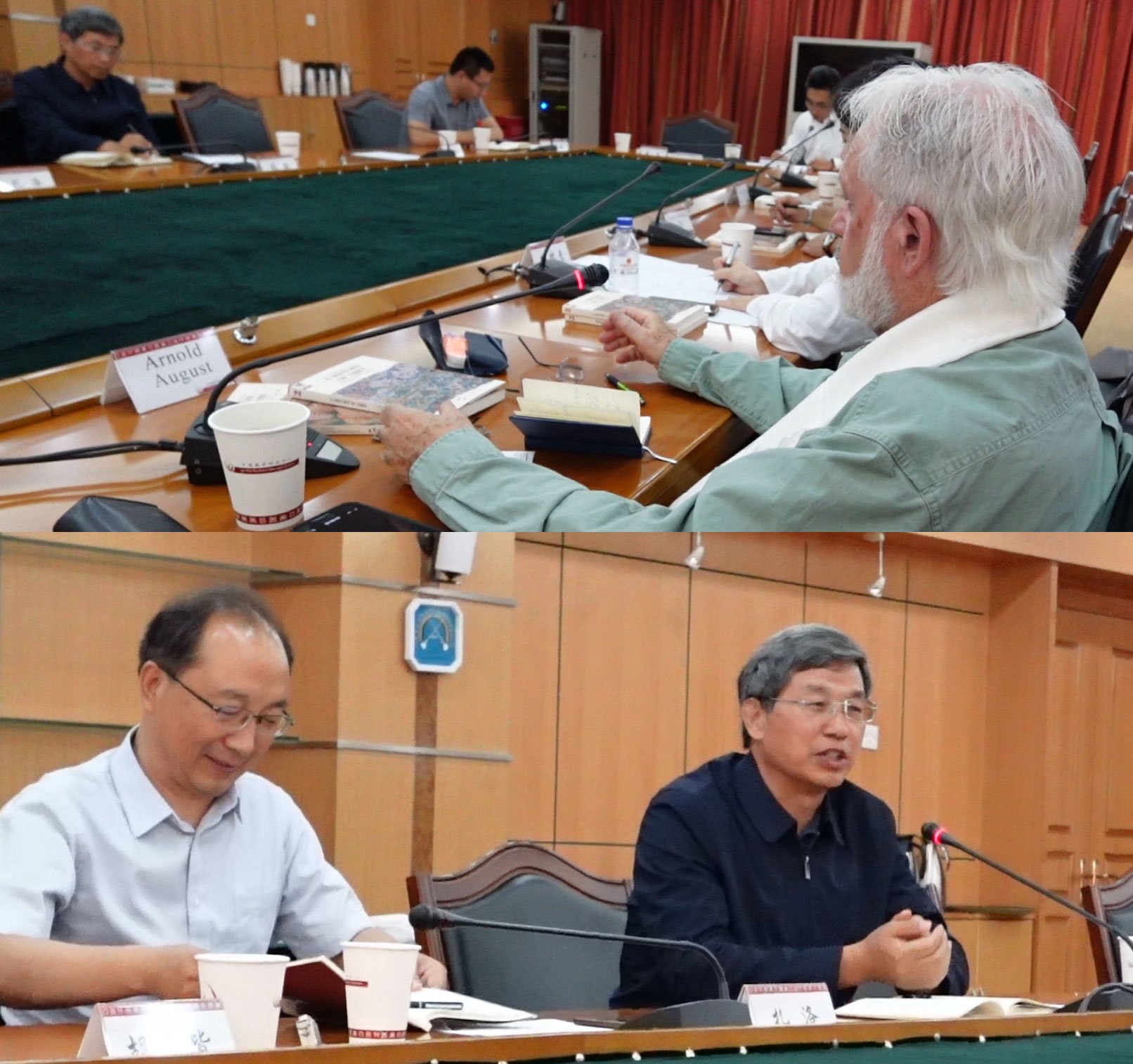The Roof of the World: China’s Tibetan Plateau. Arnold August
Part 1. Brief Introduction: Report on the China Tibetology Research Center, Beijing

All Global Research articles can be read in 51 languages by activating the Translate Website button below the author’s name.
To receive Global Research’s Daily Newsletter (selected articles), click here.
Click the share button above to email/forward this article to your friends and colleagues. Follow us on Instagram and Twitter and subscribe to our Telegram Channel. Feel free to repost and share widely Global Research articles.
***
My task is to write articles for New Cold War. Although this multi-part series is my responsibility, it is the result of a collective effort by the six of us during and since our return to our respective countries from China. From day one, we immediately came together, with the common goal of bringing the reality of the Tibetan Plateau to international public opinion.
The Tibetan Plateau comprises the Tibet Autonomous Region and a large part of Qinghai province. It extends west to Sichuan province and south to the Xinjiang Uygur Autonomous Region. Why the “roof of the world”? The Tibetan Plateau has an average altitude of around 4,500 metres. It is the world’s highest and largest plateau above sea level, covering an area of 2.5 million square kilometres.
The mere mention of the word “Tibet” by Professor Radhika triggered in my mind, just two days before her invitation, the August 22, 2023 announcement by U.S. Secretary of State Antony J. Blinken of “Visa Restrictions to Address Forced Assimilation in Tibet.” The reason given by Blinken for this new sanction against individuals is “their involvement in the forcible assimilation of more than one million Tibetan children in government-run boarding schools. These coercive policies seek to eliminate Tibet’s distinct linguistic, cultural, and religious traditions among younger generations of Tibetans.” However, there is not a single source that provides facts to support this accusation.
On February 6, 2023, in a complementary statement, the Office of the United Nations High Commissioner for Human Rights wrote:
“We are very disturbed that in recent years the residential school system for Tibetan children appears to act as a mandatory large-scale programme intended to assimilate Tibetans into majority Han culture, contrary to international human rights standards.”
Once again, no sources, just baseless assertions.
On September 14, in Beijing, we held an exchange at the Chinese Tibetology Research Center (CTRC). The Center was represented by Zha Luo, Director of the CTRC’s Institute of Social and Economic Studies. A prolific author on Tibet, he informed us that, in August 2023, over 300 Tibetology researchers from China and abroad had gathered in Beijing for a major international seminar to promote Tibetan studies.
The seminar has been held since 1991. As one of the largest international academic events in the field of Tibetan studies, the seminar is an important platform for Tibetology scholars in China and abroad to present the latest research findings and deepen exchanges and cooperation, according to the CTRC. During the event, scholars discussed topics such as education, Tibetan Buddhism, and social transformation and change, as well as architecture and living conditions on the Qinghai-Tibet Plateau.

Photo Credit: H. Weldin
Zha Luo also assured us that we would visit a boarding school during our visit to the Plateau. We did indeed visit one, and as with our exchange with the CTRC in Beijing, we were able to ask any questions we might have had. And so, we did, as we shall see later in this series. Although the aforementioned complaints against China regarding boarding schools did not name any individuals, we were there. We saw and heard the reality, not only on-site, but throughout the trip: a true revelation.
Thus, the orientation of this series of articles is not at all defensive with regard to conditions on the Tibetan Plateau. In addition to frank exchanges with the CTRC and numerous on-site visits, the conclusion is that we must avoid limiting ourselves to mere refutations of the U.S.-led story. Indeed, the reality of the Tibetan Plateau that we discovered is so steeped in the promotion of Tibetan language, culture, history, heritage and religion that asserting that Tibet is not this or that, as promoted by the United States, cannot do justice to the reality of the Tibetan Plateau. If this orientation would have been adopted, this multi-part series would amount to a series of innuendoes that I would like to avoid. It is about what Tibet is, not what it is not.
What’s more, Tibetan reality is so blatantly different from the corporate media’s misinformation that the series can hopefully shed a little more light on the region’s other main issue – the neighbouring Xinjiang Uygur Autonomous Region – by asking the question “Now that the reality of Tibet is further revealed, can people believe the U.S. narrative of so-called oppression and genocide against the Uygurs?”
*
Note to readers: Please click the share button above. Follow us on Instagram and Twitter and subscribe to our Telegram Channel. Feel free to repost and share widely Global Research articles.
This article was originally published on New Cold War.
Arnold August is an award-winning journalist and author of three acclaimed books. His three books on Cuba-US-Latin America have been acclaimed by experts in the field. In 2013, he was awarded the Félix Elmuza Award by the Association of Cuban Journalists and contributes to outlets in English, Spanish and French in many parts of the world. He serves as a Contributing Editor for The Canada Files.
Featured image is from NCW

